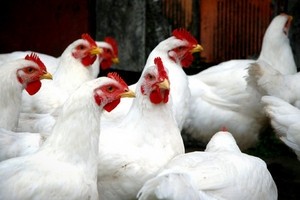Huvepharma links up with Intrexon on feed enzymes

It has teamed up with the US company to leverage its fungal production platform to produce a targeted feed enzyme.
“Working with a partner like Intrexon allows us to move more quickly on enzyme research and development. We are specialists in fermentation processes, while it has specific knowledge on strain engineering.
“We are always looking for new ways to develop enzymes, to improve their productivity and to reduce the cost of production,” Karel Bierman, global director, enzymes, at Huvepharma, told us.
The global feed additives market is estimated to exceed $20bn by 2021 as demand for animal protein continues to increase, while enzymes used to enhance the nutritional value of feeds were valued at over $1 billion in 2015, reported the partners.
To optimize the nutritional value and the digestibility of animal feed, efficient industrial production of enzymes and other protein-based additives is needed, and fungal systems are an ideal production platform given their high protein yield and substantial secretion capacity, they said.
The R&D tie-up has now reached the stability and performance testing stage on one particular feed enzyme.
“We are ready to go to the trial phase now, which will support our registration efforts,” said Bierman.
He would not be drawn on which species the alliance is targeting with the new enzyme product.
However, as poultry remains Huvepharma’s core business, it is more than likely the broiler, layer or turkey segments would be the target markets.
Phytase for fish feed
The aquaculture sector has also been on the Sofia headquartered company’s radar though.
Huvepharma recently received a positive opinion from the European Food Safety Authority (EFSA) for the use of its phytase product, branded Optiphos, in feed for finfish such as salmon and rainbow trout.
“We expect EU Commission approval in the next two to three months and then the additive will be available for use in fish feed,” said Bierman.
The phytase product is already authorized for use in poultry and swine in Europe.








